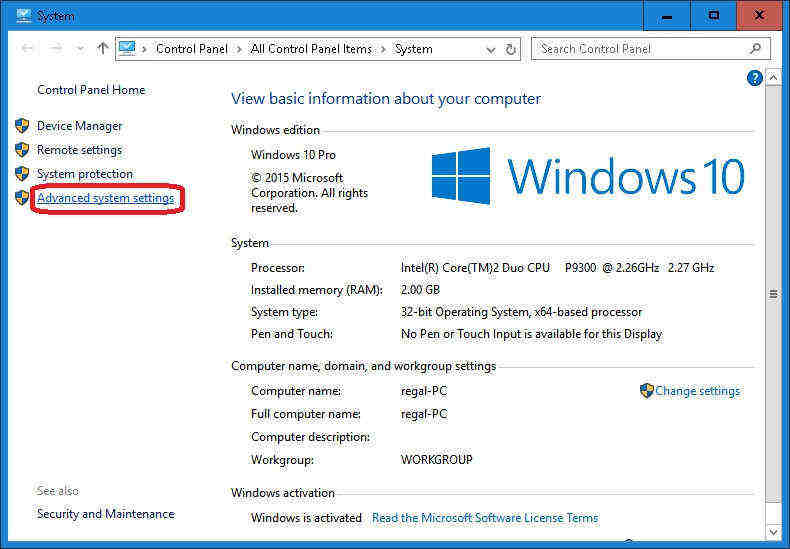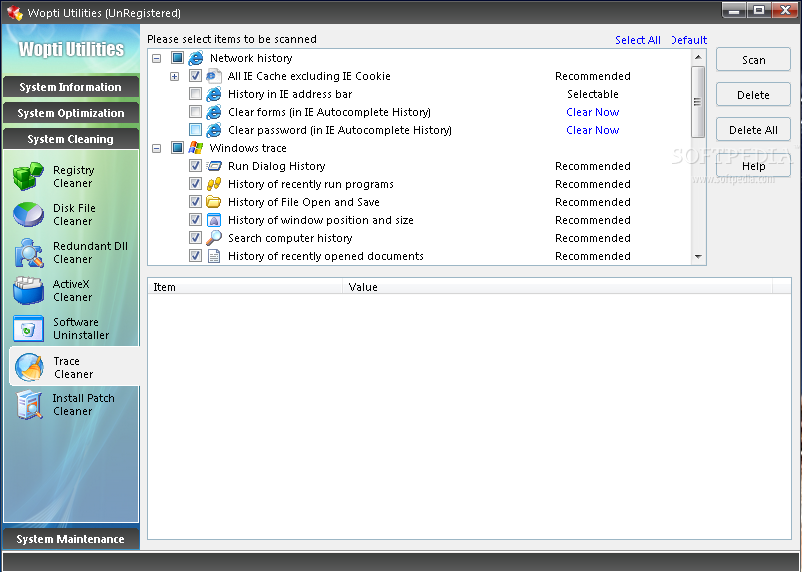
- #Avg memory clean windows update#
- #Avg memory clean windows windows 10#
- #Avg memory clean windows software#
#Avg memory clean windows software#
If you heavily utilize Microsoft's Volume Snapshots (the software snapshot, not the hardware snapshot), the more snapshots you keep combined with large data changes, then System will consume more RAM. I found an outlier case that causes high System memory usage, and wanted to include it in case this information benefits anyone. In this demo 388MB are compressed to 122MB so 267MB are saved with the compression. If you hover over the used memory graph in Taskmgr you see a tooltip that shows the amout of data that are compressed. The Taskmgr only shows the amount of compressed memory in the overview:
#Avg memory clean windows update#
In the Window 10 Anniversary Update which was released in August 2016, Microsoft extracted the Compression into now shown in a pseudo process called Memory Compression to no longer confuse users why SYSTEM has such a large memory usage:īut it looks like Taskmgr doesn't show this process, only ProcessExplorer/ProcessHacker are able to show it. To avoid confusions about the "high" usage. In the latest TH2 Builds, Microsoft updated the description in the task manager and now also shows that the SYSTEM process hosts the compressed memory: The results should make for a snappier experience. In RAM, but it is also compressed - making hard page faults a more Optimizations that allow your processes to trim some of the memory but Turns out that that the OS is doing some clever Until I understood more about memory management, paging, and hard / A process taking more memory sounds like a bad thing - that is

#Avg memory clean windows windows 10#
Process in Windows 10 is taking a bit more memory and why it's a good

In this video Mehmet Iyigun spent some time discussing why the System Microsoft also released a Video on channel9 which explains the feature. Older versions of Windows may have felt sluggishīecause of the transfer rates between the disk. Simultaneously decompressing data and reading it in parallel using The newĭecompression should result in a speedier experience as Windows 10 is Sequential reads to produce pages into memory once called. Windows 10 is using the combination of parallelizability and Times for all devices as well as extended lifespans on systems thatĭecompression is also something Windows 10 is designed to do well. Only 50% as often as previous versions of the OS.” If all goesĪccording to plan, Windows users could be experiencing reduced waiting Up about40% of the uncompressed size, and as a result of a typicalĭevice running a typical workload, Windows 10 writes pages out to disk With less writing, the result should beįewer disk operations – thanks to the compression – and now more dataĪccording to the Windows team, “ In practice, compressed memory takes Of all or nothing, Windows 10 MM will compress unused pages rather Process, and the original process comes looking for its page. A backup list isĬaptured in case memory is reclaimed from the standby list by another Pagefiles backing up a list of standby pagefiles. MM will determine which pages should be moved to the modified list inĪ process called trimming. Now, when faced with memory pressure issues, Updated with Windows 10 introducing a layer between the pagefile and (perhaps not) that if apps weren’t on screen, they wouldn’t run until Similar to some smartphone OS management. To suspended UWP apps when they were not in the foreground, very Winbeta created a article which includes more details.Īpparently, the reason for this happened to do with Microsoft choosing Microsoft also posted more details in the inside hub.

And this compressed memory is shown in the System process. So instead of writing memory data to the pagefile it compresses them. To be consuming more memory than previous releases. Is visible in Task Manager and the reason the System process appears System process holds the store in memory, its working set grows largerĮxactly when memory is being made available for other processes. TheĬompression store lives in the System process’s working set. This also helps provide better responsiveness across Windows 10. Windows 10 to maintain more applications in physical memory at a time. This reduces the amount of memory used per process, allowing Pressure, it will compress unused pages instead of writing them toĭisk. This means that when Memory Manager feels memory In Windows 10, we have added a new concept in the Memory ManagerĬalled a compression store, which is an in-memory collection ofĬompressed pages. In the announcement of Windows 10 Build 10525, Microsoft explained it a bit: It is related to System Memory compression. I've asked Microsoft about it and the answer is that this is by design.

I've looked at xperf traces of several users and here the function ntoskrnl.exe!SmKmStoreHelperWorker of the Kernel starts to allocate memory.


 0 kommentar(er)
0 kommentar(er)
